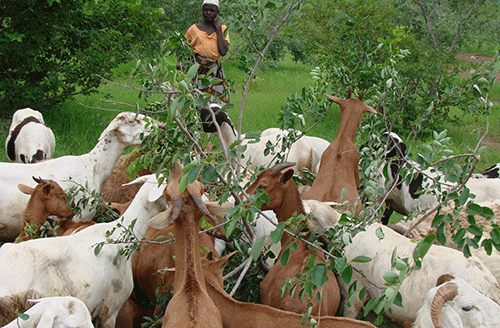Erastus Ngaruka
Livestock farming has become more costly, and one of the costliest undertakings is livestock feed and lick supplementation. Some of the predisposing factors to this expense are poor grazing conditions, drought, high feed ingredient prices and improper feed management, amongst others.
Feed and lick supplementation are aimed at compensating and maintaining the animal’s daily nutritional and feed intake requirements to optimally maintain or improve its body condition, health and performance or productivity.
The nutrients that livestock require include protein, energy, minerals and vitamins, including water. The cheapest source of feed to livestock is the rangeland, however; they are provided with roughage and concentrate feeds to satisfy their daily requirements, and these can be processed in various forms to influence intake. In comparison, roughage feeds (e.g. grass and straw) have higher fibre content, slowly digestible, and have a lower nutrient concentration than concentrate feeds (e.g. maize corn and cottonseed).
The choice of lick and feed depends on the targeted nutrients and intended benefit to the animal. Thus, an appropriate lick and feed management plan is important to ensure that livestock productivity is highly maintained at a low cost. The provision of lick and feed should serve either for maintenance or production purposes.
Maintenance supplementation is aimed at ensuring survival by maintaining the minimum daily nutritional needs of an animal, whereas production supplementation is aimed at satisfying the high levels of nutritional demands that increases with increasing the production level or performance of an animal.
Animals in different production stages have different nutritional needs and feeding volumes. For example, a lactating cow ( with a suckling calf) will have higher nutrient needs and feed intake because of the increased demand to produce sufficient milk and maintain its body condition than a dry cow (without a suckling calf) that would only need to maintain its body. Furthermore, production supplements are targeted to achieve growth, weight gain, milk yield and reproduction. For example, common commercial products such as “Production Lick” amongst others is a production supplement, and “Dryveld
Concentrate” is a maintenance supplement, thus, they serve different purposes.
To manage lick and feed provision effectively, farmers need to understand the daily nutritional requirements of the animal at any production stage, and the recommended daily intake of the supplement. These commercial supplements are formulated to satisfy specific nutritional targets where an animal is supposed to eat a specified amount of a particular supplement per day to meet its daily nutritional requirements.
Production supplements have higher recommended daily intake levels than maintenance supplements. For example, the recommended daily intake for “Dryveld Concentrate” is 500g per day whereas for Production lick is 1000g and more per day.
Furthermore, roughage feed supplementation is also based on the dry mater intake requirement of an animal per day. On that, an animal will at least need to eat an amount of roughage feed equivalent to 3% of its body weight per day.
These estimates will help a farmer to budget and provide supplements effectively given the number of animals targeted. Many farmers do not use these estimates, and thus are losing out by either buying more or less than what they need, which in turn compromises productivity and income. Farmers need to start relating feed costs to total feed utilisation.
Any supplement introduced should be effectively utilised by the animal and achieve the targeted production objective. Therefore, ensure that you provide the right supplements at the right time, in the right amount to the right animal.
- AgriBank
*Erastus Ngaruka is Technical Advisor Agribank’s Advisory Services


